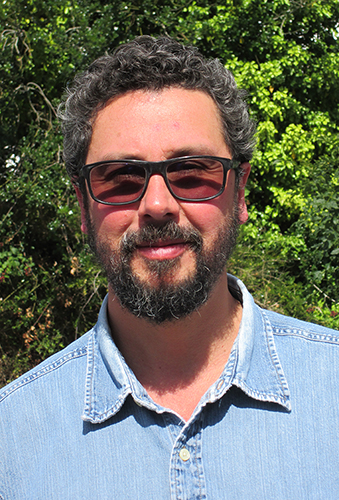Professor Andrea Mammoli from the University of New Mexico, gave a seminar at Ashurst Lodge on the Thermal Analysis of Residential Scale Ice Storage Devices.

Professor Mammoli
Wessex Institute has had over the years many contacts with the University of New Mexico at Albuquerque collaborating in the organisation of boundary element courses and several important international conferences in Sante Fe.
These links continue to this day with the co-organisation of the Multiphase Flow Conference, co-chaired by Professor Peter Vorobieff of the Mechanical Engineering Department.
Andrea who was spending his sabbatical at Ashurst Lodge, gave a short introduction describing the use of ice storage in the past up to today’s commercial scale ice storage devices.
The Hyatt Hotel in Albuquerque for instance has 40 large cylinders holding ice but there are no residential systems at present.
The reasons for this are various including tariffs that do not encourage such devices although they are ideal in places like New Mexico and California where more than 40% of the peak electricity demand is used in air conditioning.
Andrea described the experimental house built by the University to participate in a national competition, the DOE Solar Decathlon. The house has a residential ice storage system. The basic storage unit is made out of plastic, water and glycol.
Andrea described the mathematical model representing the problem and in that way calculated the rate at which heat could be transferred to and from the ice for a given configuration.
A comparable device is the Tesla Powerwall battery based on lithium. It can store 6.4 kWh of energy, and deliver 3.3kW at peak power which in terms of cost of the battery represents $468/KWh or $1,500/KW.
An ice storage device designed to store 7 kWh of energy can reduce the electricity load by over 4 kW. Such a cooling unit would contain approximately 200 kg of ice, and its size would be comparable to that of a small refrigerator. Andrea thought that its efficiency can be very high if the freezing is carried out at the right time during the day.
The widespread use of PV particularly in California means that there is a substantial supply of electricity during the day, ready at the time when people are at work at the time that the solar energy is being harvested. This situation changes in the evening when there is a considerable increase in power demand. This difference implies that many power plants need to be shut down during the day and restarted in the evening, which is uneconomical. The use of residential scale ice storage devices may be the right solution to even out the production of electricity throughout the day.
Andrea concluded that the ice storage device can compete favourably with a Tesla type battery in terms of cost and durability, although thermal storage is not intended to completely replace electric storage.
The presentation was followed by a large number of questions and suggestions by the audience.